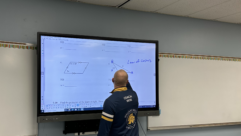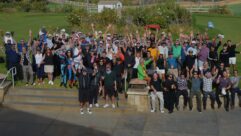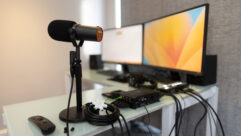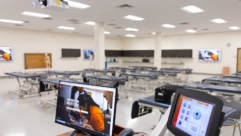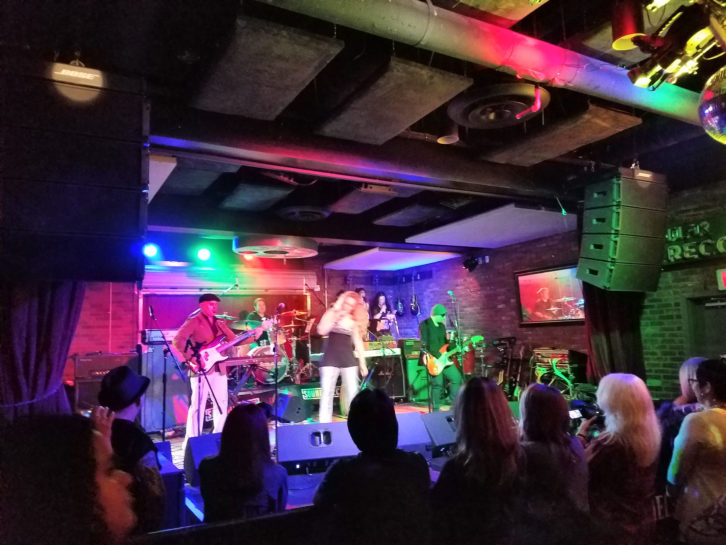

The appropriately-named Lucky Strike Entertainment hits all the right points: the 20-location entertainment and hospitality company has operated its trendy bowling lounges in Los Angeles, New York, San Francisco, Houston, Chicago, Denver, Honolulu and other major cities for 15 years, combining bowling with great food and cool cocktails. Four years ago, the company began adding live music, locating entertainment stages in several of its locations. Hollywood was the first Lucky Strike Live venue, and the 782-person venue has become a major force and “known secret” in the L.A. live music scene as well as a showcase for many well-known concert artists and the sound equipment they use while there.
Artists including Johnny Depp, Gilby Clarke, Deryck Whibley, Dave Grohl, Phil Anselmo, Jerry Cantrell, Sen Dog, Steve Vai, Nuno Bettencourt, and many others have performed through the venue’s Bose Professional ShowMatch concert system. It comprises two arrays of four ShowMatch modules per side and six ground-stacked SM118 subwoofers supporting a stage that faces out onto several of the venue’s dozen lanes. The system is powered by six Bose PowerMatch PM8500N networked amplifiers and controlled using a ControlSpace ESP-880 processor. The ShowMatch system is joined by backline guitars and amplifiers provided by Friedman Amplification, drums from DW, microphones from Shure and a FOH console from Behringer.
“When musicians hit the stage, they are blown away by what we have here,” says Dan DeAngelo, Unit/Entertainment Manager at Lucky Strike Live’s Hollywood location, who is responsible for curating and booking the venue’s live music event calendar as well as coordinating marketing/promotion of all shows.
Michael Sanders, owner of Los Angeles-based integration firm Pyramid Pro Audio, worked closely with Lucky Strike Management to tailor the system to the space, including the use of Bose Modeler Sound System software. In particular, the goal was to perfectly match the architecture around the stage — a wall and a bar at stage left with more open space to the right. Pyramid Pro Audio Inc. recommended the use of asymmetrical waveguides (50 degrees on the right side waveguide, 70 degrees on the left, for three SM5 and one SM10 modules per array) on the house right side hang in order to direct audio away from the bar and out towards the listening area. Before ShowMatch, the venue had an older system that first needed to be removed. Sanders then discovered that the existing rigging points were not sufficiently robust to support the new system. “We had to design some hanging points within the Lucky Strike structure and work around the existing electrical. We then ran all new cabling for the system, and installed the entire new ShowMatch system within a few days,” stated Sanders.
“The first song we played was AC/DC’s ‘Back in Black,’ which I am very familiar with, and I could clearly hear the sticks hitting the high hat,” Sanders recalls, who was deeply impressed with the accuracy of the system. “What I noticed was there was no harshness in the midrange and high frequencies, and that the guitar sounds were accurately reproduced exactly as they sounded on the stage. I also noticed the system could get super loud without tearing your head off, and I believe that has a lot to do with the Bose compression drivers. Across all the years that I’ve been dealing with sound equipment, ShowMatch is, bar none, the most accurate PA. It’s pretty revolutionary.”


